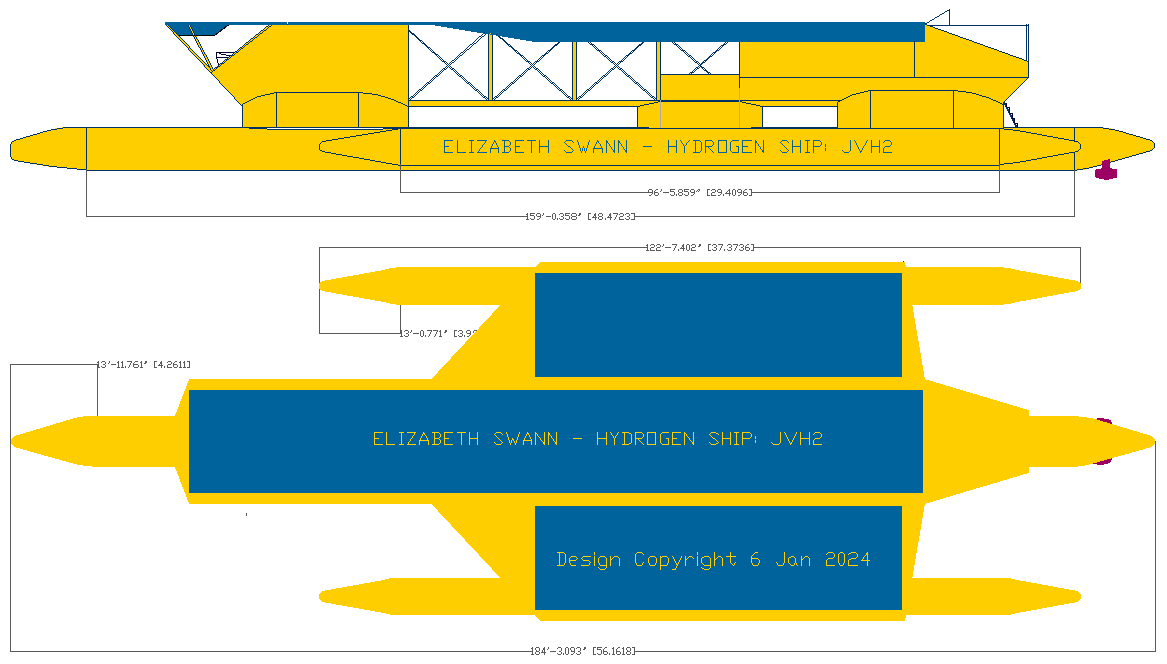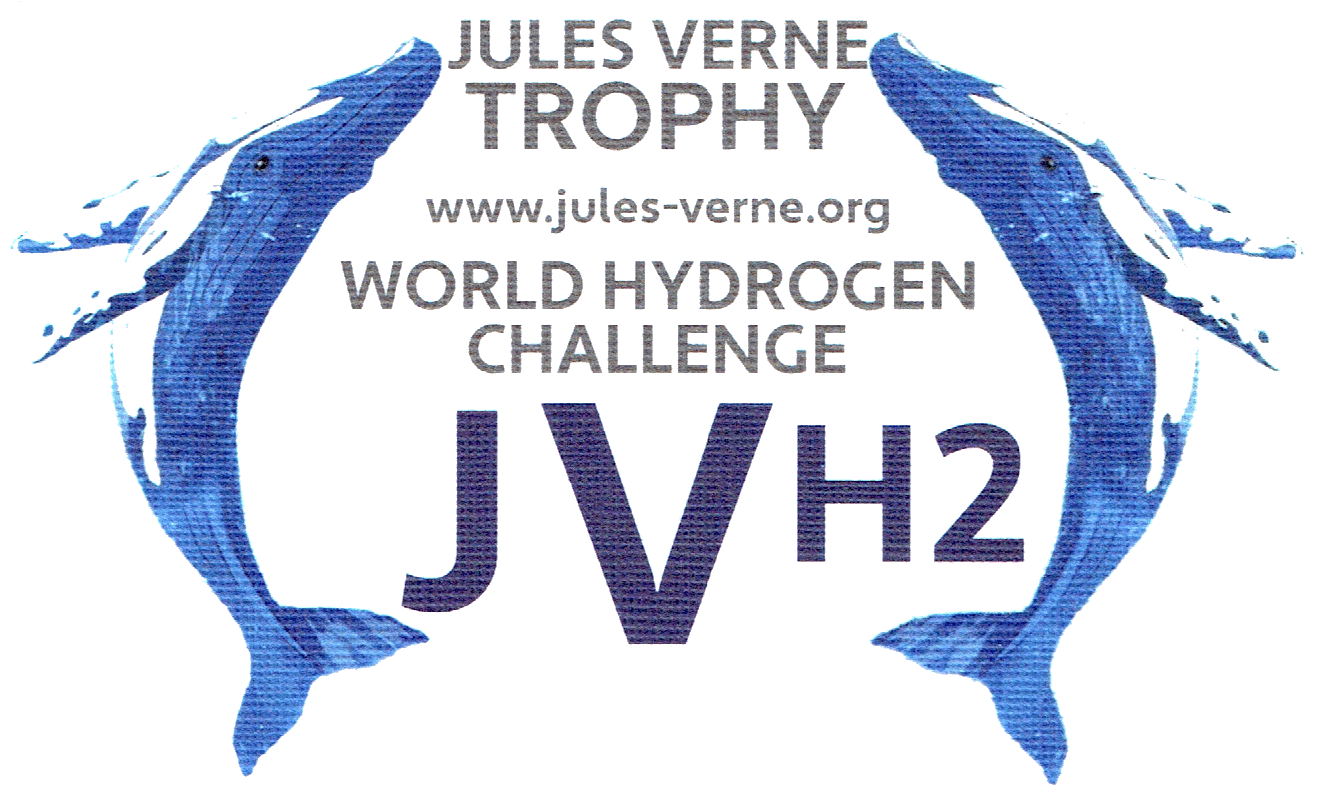|
PREAMBLE
To be clear we are advocating for a future with a diversified energy portfolio that includes
oil and renewables:
This is a Collaboration to "Building Bridges, Not Walls. We believe the future of energy lies in collaboration, not competition. The Elizabeth Swann demonstrates the potential of renewables like solar and hydrogen, while acknowledging the continued importance of oil for a smooth transition."
We're not here to replace oil, but to offer a complementary
solution as partners to progress. The Elizabeth Swann is a testament to how oil companies
might extend their reserves and invest in a sustainable future at the same
time.
The focus is on Transition and Diversification. We are looking to make
the journey smoother. The Elizabeth Swann showcases how renewables can ease the transition to a more sustainable energy mix, ensuring long-term energy security for
everyone.
Working together we envision a future where oil continues to play a role,
alongside a growing portfolio of renewable energy sources like solar and
hydrogen, for a secure future.
The emphasis is on Responsible Resource Management., so extending our subterranean
legacy.
By showcasing the efficiency of renewables, the Elizabeth Swann empowers oil companies to manage their reserves more
conservatively, ensuring a longer lifespan for this valuable resource.
Carrying with it economic and environmental benefits of a diversified energy portfolio.
The
key is Sustainable Stewardship, and conscientious
resource management. The Elizabeth Swann demonstrates that energy companies can be leaders in developing a more sustainable
mix for the future.
Our
project aligns with the stated goals of many oil companies who are actively investing in renewable energy sources.
FINANCIAL
PROJECTIONS
The following is a conservative projection for the market potential of hydrogen-powered ships in the shipping
industry, considering the myriad events promoting the International
Maritime Organization's (IMO)
targets to remove particulates and sulfuric exhaust fumes. While this is an estimate, it provides a glimpse into the exciting possibilities:
2025: From 2025, we anticipate that hydrogen-powered
(including ammonia and methanol) vessels will begin to gain traction. The adoption rate will likely be moderate, with some early adopters in
tugs, coastal ferries, river
cruisers and short-haul routes. Estimated as 2% of the existing ships transitioning to hydrogen fuels.
(111 new hydrogen-powered ships)
Projected Market Value: Approximately $5 billion
worldwide (considering initial investments, retrofitting existing vessels, and new
builds).
2030:
As green hydrogen production scales up due to increased use of offshore wind turbines and solar farms, hydrogen-powered ships will become more commonplace.
Estimated as 5% of the existing ships transitioning to hydrogen fuels. (279 new hydrogen-powered ships)
Projected Market Value: Around $20 billion (factoring in expanded adoption, regulatory incentives, and growing investor interest).
2050:
By 2050, the shipping industry aims to achieve 50% of the commercial
fleets as zero
emissions. Hydrogen-powered vessels will play a pivotal role in this transition.
Estimated as 20% of the existing ships transitioning to hydrogen fuels.
(1,116 new hydrogen-powered ships)
Projected Market Value: A substantial $100 billion (accounting for widespread adoption, replacement of conventional ships, and global demand).
2100:
By 2100, the IMO dictates that commercial shipping should achieve 100%
of the commercial fleets as zero
emissions. Potentially meaning that all new ships will be powered by
ammonia, hydrogen or methanol. Though, other fuels, including battery
electric's are sure to contribute to clean maritime operations.
Keep in mind that these projections are conservative estimates. The actual market value could be
higher if technological advancements, supportive policies, and investor confidence accelerate the shift toward hydrogen-based maritime transport.
· Financial projections and market analysis.
There is as yet no hydrogen (only)
navigation
record to beat. The opportunity to be the first only comes once. We are hoping to
be able to make Jules Verne's
dream come true, with our World Hydrogen Challenge Bunkering
Route (published in draft form in July 2021).
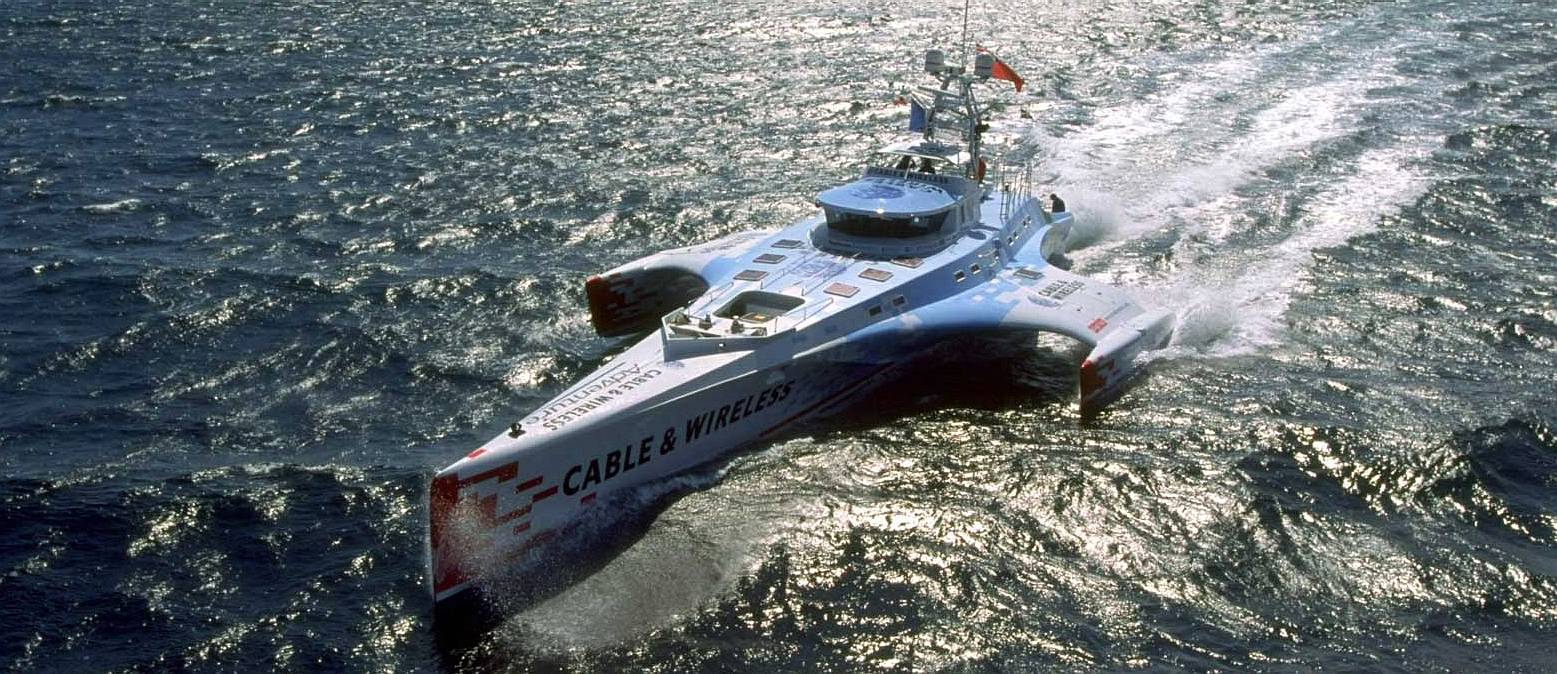
DIESEL
RECORD TO BEAT - The Cable and Wireless adventurer was a stunning achievement in 1998, around the
world in 75 days.
But still the fastest round the world boats are sailing multi-hulls. The
Jules Verne (sailing) Trophee is a record held by Francis
Joyon in the IDEC Sport in 41 days, set in 2017. These are tough
records to beat. They do not happen overnight. They are the result
of years of fine tuning and waiting for ideal conditions. Not to mention
having a team with persistence and backing. Unfortunately, though the
clipper ships of old (Like the Cutty Sark) managed incredible times to
deliver tea, spices and silks, sail power cannot provide reliable container
ship deliveries. Where conventional bunker fuels are being outlawed, one
solution is clean, green and renewable hydrogen.
CONTAINER
SHIPS AND THEIR FUEL CONSUMPTION
1. Container Ship Fleet:
The global container fleet has grown significantly over the years. As of 2022, there are approximately 5,589 container ships in the global fleet
[1]. These vessels are responsible for transporting goods across the world, with a total capacity of over five million TEUs (twenty-foot equivalent units)
[2] [3].
2. Fuel Consumption:
Traditionally, container ships relied heavily on heavy fuel oil (HFO) for propulsion. However, there has been a shift towards cleaner fuels due to environmental concerns.
In 2020, around 65.5 million metric tons of light fuel oil were consumed by ships, compared to just 6.5 million metric tons the year before. This transition was prompted by the
International Maritime Organization (IMO) capping the sulfur content of marine fuels, leading the industry to adopt cleaner alternatives
[4].
The current global shipping fleet consumes roughly 4 million barrels per day of high sulfur fuel oil (such as HFO). However, approximately 3 million barrels per day of that demand is expected to “disappear overnight” as
ship owners switch to lower sulfur fuels [5].
Heavy fuel oil bunkers still account for a significant share of the market, but the trend is shifting towards more sustainable options.
3. Market Dynamics:
The demand for bunker fuel has increased over the years, driven by the growing shipping industry. Around 50% of the total fleet of marine vessels currently uses heavy fuel oil bunkers
[6].
As regulations tighten and environmental consciousness rises, the industry will continue to explore alternative fuels, including
liquefied natural gas (LNG), biofuels, and hydrogen.
The container ship fleet is substantial, and the transition from heavy fuel oil to cleaner alternatives is well underway. As the world focuses on sustainability, the shipping industry plays a crucial role in adopting
greener practices.
HEAVY
FUEL OIL (HFO) FOR MARINE ENGINES POSES SEVERAL ENVIRONMENTAL CHALLENGES
1. Air Pollution:
HFO contains high levels of sulfur, which leads to the emission of sulfur dioxide (SO₂) when burned. SO₂ contributes to acid rain, harming ecosystems and human health.
It also releases particulate matter (PM), which can cause respiratory issues and worsen air quality in port cities.
2. Greenhouse Gas Emissions:
HFO combustion produces significant amounts of carbon dioxide (CO₂), a major greenhouse gas responsible for
global
warming.
The shipping industry’s reliance on HFO contributes to climate change and
sea-level
rise.
3. Black Carbon:
HFO combustion releases black carbon, a fine particulate matter that absorbs sunlight and contributes to the melting of glaciers and ice sheets.
Black carbon deposition on snow and ice reduces their reflectivity, accelerating warming in polar regions.
4. Oil Spills:
Accidental spills during drilling operations, HFO transportation or bunkering can have severe consequences for marine ecosystems.
HFO is viscous and difficult to disperse, leading to persistent oil slicks that harm marine life and coastal habitats.
5. Water Pollution:
HFO contains heavy metals such as vanadium and nickel, which leach into seawater during
combustion.
These metals accumulate in marine organisms, affecting their health and disrupting ecosystems.
6. Bioaccumulation:
Persistent organic pollutants (POPs) found in HFO can accumulate in the food
chain (bio-accumulation).
Fish and other marine organisms ingest these pollutants, posing risks to human health when consumed.
7. Ocean Acidification:
HFO emissions contribute to acidification of seawater due to increased CO₂ levels.
Acidic oceans harm marine organisms, including coral reefs and shell-forming species.
8. Regulatory Pressure:
International regulations, such as the IMO’s sulfur cap, limit the sulfur content in marine fuels.
Ship owners face pressure to transition to cleaner fuels, impacting the demand for
HFO.
In summary, transitioning away from heavy fuel oil towards cleaner alternatives is crucial for safeguarding our environment and achieving sustainable maritime practices.
Investors might consider that it is not just hydrogen ships and
ferries that become attractive for speculators, but also the producers of green renewables and port infrastructure, as
cargo transport transitions from 4 million barrels of oil per day.
By
demonstrating hydrogen technology in action - on the water
and in ports - the Elizabeth Swann (as the SolarSport
HydroRacer™) may assist fleet owners decide which mix
of fuels to use in their new ships. Port operators may also benefit in
deciding what fuels to bunker in place of HFO. Since, actions speak
louder than words.
WHAT IS THE VALUE OF 4M BARRELS OF OIL IN $US DOLLARS
(USD) BASED ON CURRENT MARKET PRICE?
Current Oil Price: As of the most recent data, the Brent crude oil price stands at $82.05 per barrel [11].
Using this price for our calculation.
Conversion to
USD: To convert the price from British Pounds (GBP) to USD, we’ll use the current exchange rate:
1 USD = 0.78 GBP [12].
Therefore, 1 barrel of oil in USD is approximately $82.05 × 0.78 ≈ $64.05.
Total Value:
The value of 4 million barrels would be: 4,000,000 × $64.05 ≈ $256,200,000 (approximately 256.2 million
USD).
So, 4 million barrels of oil at the current market price would be worth approximately
$256.2 million USD per day.
The
annual revenue for oil producers and exporters will be: 365 x
256,200,000 ≈ $93,513,000,000. $93.5
billion USD per year.
TRANSITIONAL
COMPENSATION VIA PERCENTAGE OF PROFITS TO DIVERSIFICATION
As
per the above figures, oil
revenues are likely to fall significantly, by over a third
($30billion USD) to 2050. But the gradual implementation will allow petroleum
producers to invest a percentage of profits year on year in solar
and wind powered electrolyzers, alternative bunkering at ports, and even
promotions to demonstrate to fleet operators. So conserving oil in the
ground, as a long-term asset, and still maintain income levels.
Thus
exporters of crude, may become producers of
clean energy solutions themselves. By 2100, the IMO
requires all commercial shipping to be zero emission. Thus in the fifty
years from 2050 to 2100, oil revenues could drop another $60 billion USD,
to just $3.5 billion USD. Hardly noticeable in that time frame, as
administrations change hands.
We will though, always need oil for chemicals
and plastics. From the date of this
present 'Projection,' increasing in demand to
provide the energy for transition to renewables. After which investment,
on a sliding scale, oil reducing as the supporting infrastructure for
renewables comes on
line.
PLEASE
NOTE: These workings relate only to oil consumption for diesel
powered cargo/container ships. They do not apply to road transport, or diesel
oils for home and factory heating systems.
ESTIMATES:
NUMBERS OF CRUISE SHIPS GLOBALLY FOCUSING ON POPULAR TOURIST
DESTINATIONS
Obtaining a definitive figure is challenging due to constant change
where new ships are built, and older ones might be retired or
re-purposed.
There are also regional variations as clean air policies are applied. Tracking might not be universally standardized across all regions.
The resources for these estimations are included:
Statista providess a 2018 record indicating that in Europe there are some 359 river cruise ships.
Russia: 121 ships
Rest of the world: 119 ships
POPULARITY
The majority of river cruises operate in Europe, particularly along the:
Rhine
Danube
Seine
Mosel
Volga (Russia)
Other popular regions include the
Nile
(Egypt) and the
Mekong (Southeast Asia).
ESTIMATION APPROACH
Based on 2018 data, we might assume a conservative growth rate of 2-3% annually since 2018. Applying regional weightage,
and assign a higher proportion to Europe due to its dominance in river cruising.
RANGE
Low-end: Based solely on 2018 data with minimal growth: 599 ships (Europe: 359, Russia: 121, Others: 119)
High-end: Accounting for moderate growth (2-3%) since 2018:
Europe: 359 * (1 + 0.03)^6 ≈ 440 (6 years of growth)
Total: 599 * (1 + 0.03)^6 ≈ 730
Therefore, a conservative estimate would be around 600-700 river cruise ships globally, with a focus on popular tourist destinations in
Egypt, Europe, Russia, and other regions.
We might apply the same transitional percentages as used above for cargo
shipping. Creating a market for zero emission river tourism.
2025: From 2025, we anticipate that hydrogen-powered
(including ammonia and methanol) vessels will begin to gain traction. The adoption rate will likely be
moderate. Again, estimated as 2% of the existing ships transitioning to hydrogen fuels.
(13 new hydrogen cruise ships)
Projected Market Value: Approximately
$6.5 - 10 billion
worldwide (considering initial investments, retrofitting existing vessels, and new
builds).
2030:
As green hydrogen production scales up due to increased use of offshore wind turbines and solar farms, hydrogen-powered ships will become more commonplace.
Estimated as 5% of the existing ships transitioning to hydrogen fuels. (32 new
hydrogen cruise ships)
Projected Market Value: Around $16-32 billion (factoring in expanded adoption, regulatory incentives, and growing investor interest).
2050:
By 2050, the shipping industry aims to achieve zero
emissions. Hydrogen-powered vessels will play a pivotal role in this transition.
Estimated as 20% of the existing ships transitioning to hydrogen fuels.
(130 new hydrogen cruise ships) Though, in
the case of tourism, with the environment being visibly higher on traveler's
agendas. It is likely that at least half of the river cruising fleet
will be zero emission ≈ 325
vessels. Worth a whopping $300 - 600 billion USD.
BUILD
COST ESTIMATES OF SMALL CRUISE SHIPS
The exact cost of building a small cruise ship depends on several factors, but here's a breakdown to give you an idea:
Size: This is the most significant factor. Small cruise ships typically range from carrying a few hundred to around 2,000 passengers. Costs increase significantly with larger passenger capacity.
Features: The onboard amenities and technology significantly impact the price. Ships with elaborate water parks, multiple restaurants, theaters, and advanced propulsion systems will cost more than those with simpler offerings.
Shipyard: Labor and construction costs can vary depending on the shipyard location. Yards in some Asian countries might be cheaper than those in Europe or North America.
Here's a range for small cruise ship building costs:
- Low-End Estimate: For a very basic small cruise ship with a capacity of around 500 passengers and minimal amenities, the cost could be as low as $550 million.
- High-End Estimate: For a luxurious small cruise ship with a capacity of around 2,000 passengers, featuring top-of-the-line amenities and technology, the cost could reach $1 billion or even more.
Important Note: These are estimates based on industry data. The actual cost of building a small cruise ship can vary depending on the specific factors mentioned above.
Sources:
https://www.cruisehive.com/how-much-does-it-cost-to-build-a-cruise-ship/70619
https://themusterstation.com/
The growing focus on sustainability presents an opportunity for hydrogen-powered river cruise ships. Highlighting the potential to replace existing vessels with cleaner technology, can be attractive to investors.
The JVH2 formula may be applied to newly built river cruisers, by
up-scaling the technology. The 'Elizabeth Swann' based 'SolarSport
HydroRacer™' offers investors an affordable means to promote the
technology with the media, while also demonstrating the technology at
events. One such high profile opportunity, being a Cleopatra
themed "Queen
of the Nile" for operation on the river
Nile.
FURTHER RESEARCH
The River Cruise Line Association (RCLA) in Europe (https://europe.cruising.org/)
American Cruise Line Association (ACLA) in the US (https://cruising.org/)
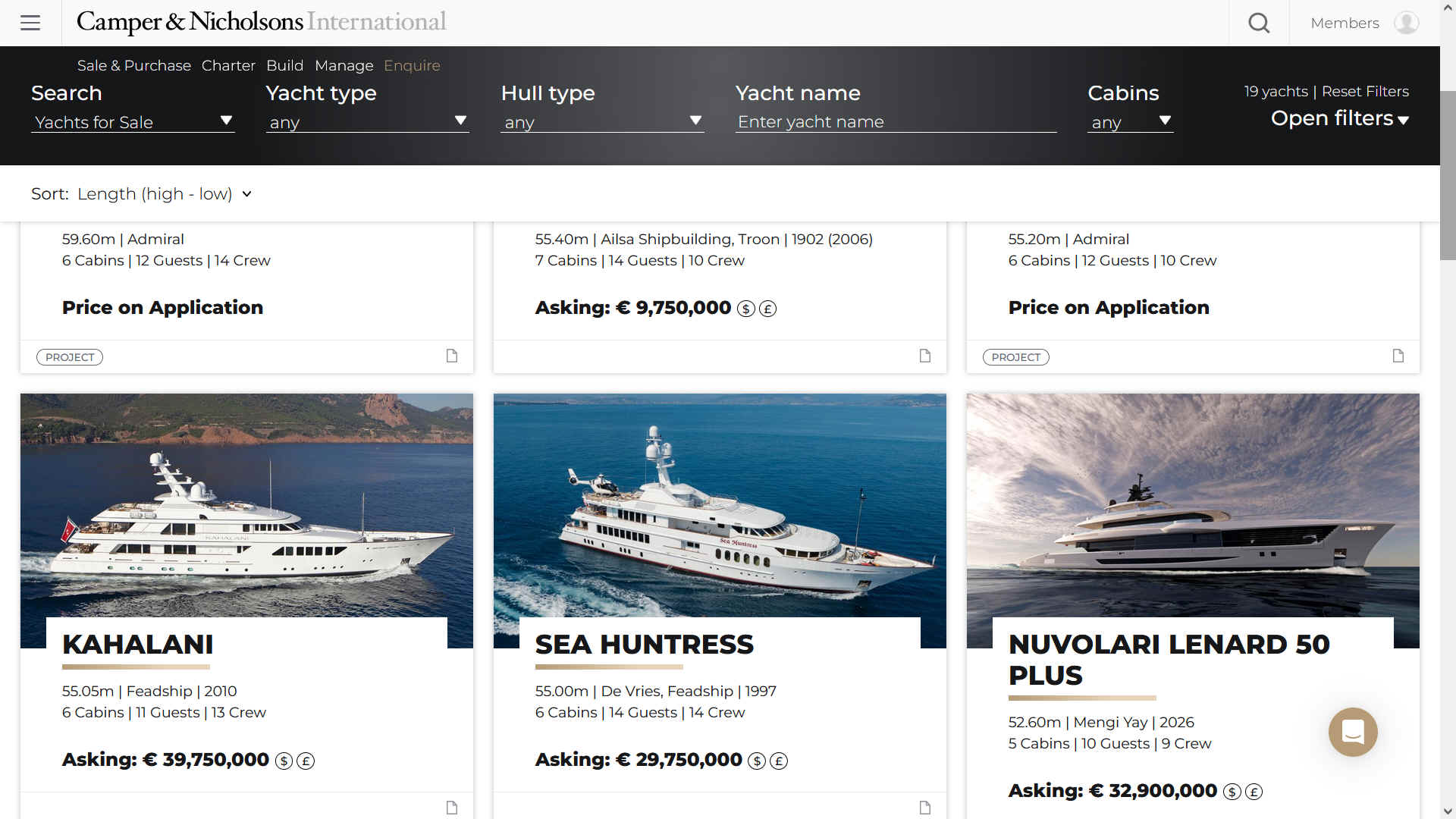
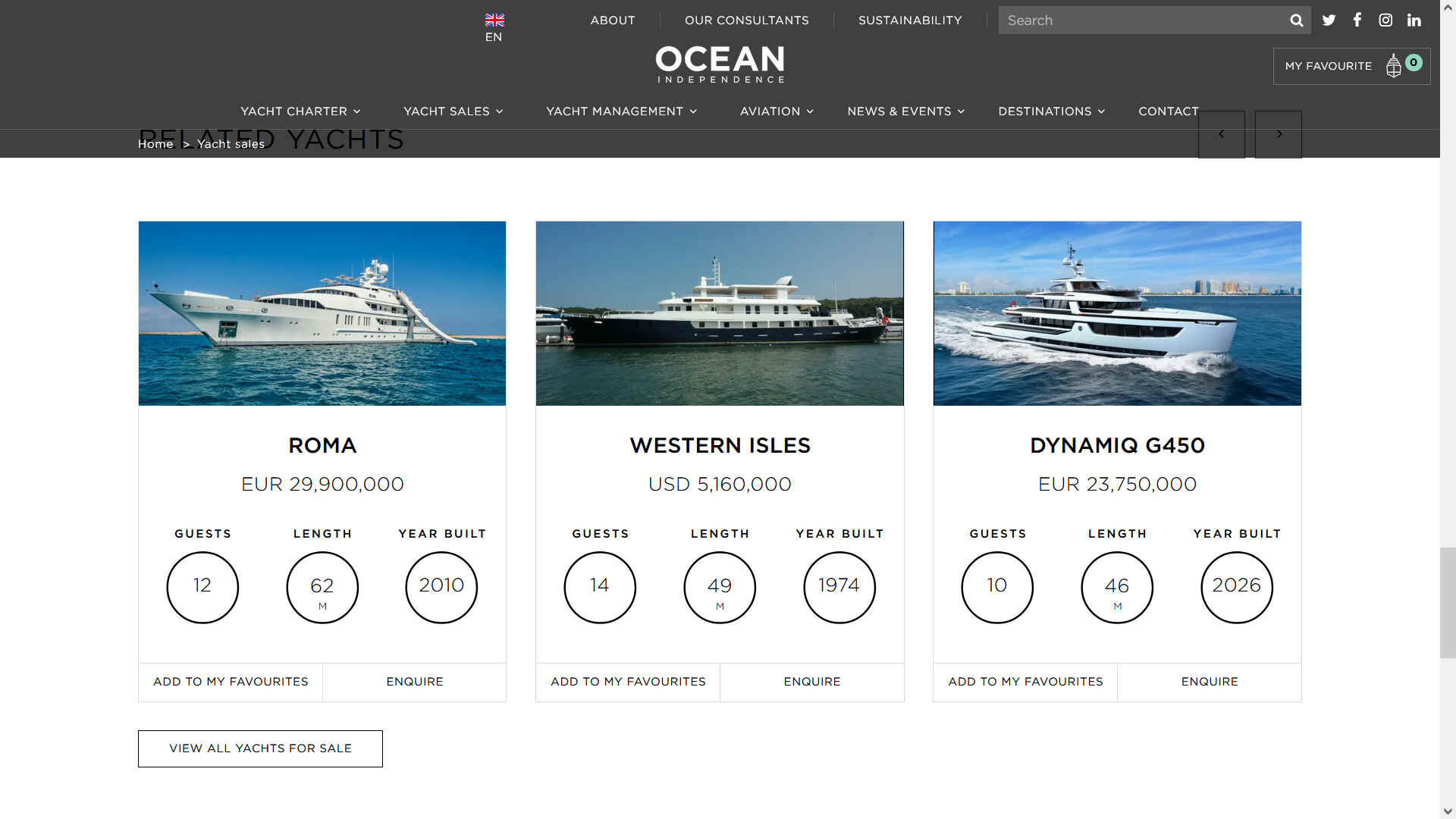
THE
LUXURY POWERED YACHT MARKET
At
time of writing, the most expensive yacht in the world is the 'History
Supreme' at $4.8 billion.
She is built from 10,000 kilograms of solid gold and
platinum and is 100-foot
long, designed by Stuart Huges, for Malaysia’s richest man, Robert
Knok.
After
a brief peek at the market, most luxury yachts in the 45 - 55 meter
range sell for between $10 and $40 million USD, new or second user.
Though
the bare bones hull of the Elizabeth Swann is below average market
values. Once relief's and interior furnishings are added, such as for
themed European or Nile cruising, or for custom private motor-boat
sales, we anticipate being competitive around $10-20m USD.
Being
part solar powered, and part hydrogen, cost effective clean cruising using renewable 21st century bunker
fuels, is part of the package. It is practical to cruise using solar
power alone, meaning no fuel to buy. Provided, speeds are contained,
such as in river cruises.
Important Note: These are approximations. Actual numbers on the
day might differ due to constant changes in the industry.
[1]
https://www.statista.com/statistics/198227/forecast-for-global-number-of-containerships-from-2011/
[2] https://www.statista.com/topics/1367/container-shipping/
[3] https://www.statista.com/chart/9901/container-shipping-companies-worldwide-by-number-of-ships/
[4] https://www.statista.com/statistics/1266963/amount-of-fuel-consumed-by-ships-worldwide-by-fuel-type/
[5] https://bing.com/search?q=consumption+of+bunker+heavy+diesel+fuel+oil+in+shipping+industry
[8] https://www.crownoil.co.uk/guides/bunker-fuel-guide/
[9] https://link.springer.com/article/10.1007/s44176-022-00003-2
[6] https://www.fortunebusinessinsights.com/thoughtleadership/bunker-fuel-9375
[7] https://assets.publishing.service.gov.uk/government/uploads/system/uploads/attachment_data/file/967763/shipping-fleet-statistics-2020.pdf
[10] https://en.wikipedia.org/wiki/Container_ship
[11]
https://markets.businessinsider.com/commodities/oil-price
[12] https://commodity.com/energy/oil/price/
[13] https://www.oilmonster.com/crude-oil-prices
[14] https://www.theguardian.com/business/live/2022/mar/02/oil-price-blasts-111-opec-meeting-sberbank-european-arm-closed-business-live
[15] https://www.exchangerates.org.uk/commodities/live-oil-prices/OIL-GBP.html
[16] https://www.xe.com/currencyconverter/convert/?From=USD&To=GBP
[17] https://themoneyconverter.com/USD/GBP
[18] https://www.macrotrends.net/1369/crude-oil-price-history-chart
[19] https://www.oilcrudeprice.com/
https://europe.cruising.org/
https://www.statista.com/statistics/1119639/size-of-the-river-cruise-ship-market-worldwide/
https://cruising.org/
https://camperandnicholsons.com/
https://camperandnicholsons.com/
https://www.businessinsider.com/these-are-10-of-the-most-expensive-yachts-in-the-world-2023-1
https://www.oceanindependence.com/
https://www.businessinsider.com/these-are-10-of-the-most-expensive-yachts-in-the-world-2023-1
https://www.oceanindependence.com/
https://europe.cruising.org/
https://www.statista.com/statistics/1119639/size-of-the-river-cruise-ship-market-worldwide/
https://cruising.org/
[1] https://www.statista.com/statistics/198227/forecast-for-global-number-of-containerships-from-2011/
[2] https://www.statista.com/topics/1367/container-shipping/
[3] https://www.statista.com/chart/9901/container-shipping-companies-worldwide-by-number-of-ships/
[4] https://www.statista.com/statistics/1266963/amount-of-fuel-consumed-by-ships-worldwide-by-fuel-type/
[5] https://bing.com/search?q=consumption+of+bunker+heavy+diesel+fuel+oil+in+shipping+industry
[8] https://www.crownoil.co.uk/guides/bunker-fuel-guide/
[9] https://link.springer.com/article/10.1007/s44176-022-00003-2
[6] https://www.fortunebusinessinsights.com/thoughtleadership/bunker-fuel-9375
[7] https://assets.publishing.service.gov.uk/government/uploads/system/uploads/attachment_data/file/967763/shipping-fleet-statistics-2020.pdf
[10] https://en.wikipedia.org/wiki/Container_ship
[11]
https://markets.businessinsider.com/commodities/oil-price
[12] https://commodity.com/energy/oil/price/
[13] https://www.oilmonster.com/crude-oil-prices
[14] https://www.theguardian.com/business/live/2022/mar/02/oil-price-blasts-111-opec-meeting-sberbank-european-arm-closed-business-live
[15] https://www.exchangerates.org.uk/commodities/live-oil-prices/OIL-GBP.html
[16] https://www.xe.com/currencyconverter/convert/?From=USD&To=GBP
[17] https://themoneyconverter.com/USD/GBP
[18] https://www.macrotrends.net/1369/crude-oil-price-history-chart
[19] https://www.oilcrudeprice.com/
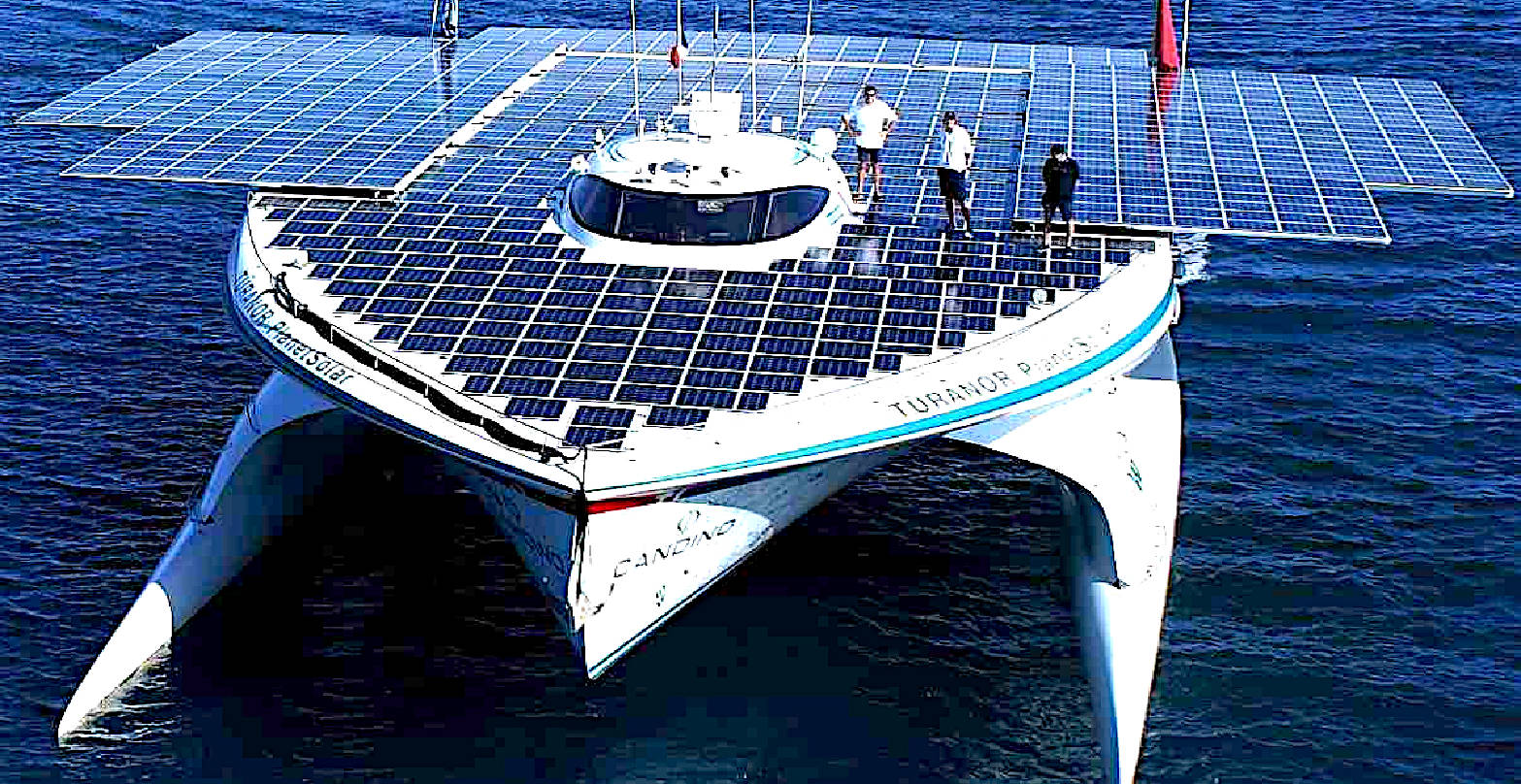
SOLAR
RECORD TO BEAT - On the 27th of September 2010 Tűranor
PlanetSolar started on a journey around the world from Monaco. With this
expedition, the initiators of the project aimed to focus the public
awareness on the importance of renewable energies for environmental
protection.
After 584 days, Tűranor PlanetSolar returned to Monaco on 4 May
2012 having sailing around the globe.
According to the famous record book: "The longest journey by
boat on solar power only is 32,410 nautical miles (60,023 km; 37,296
miles), by MS TŰRANOR PlanetSolar (Switzerland), which circumnavigated
the world in a westward direction leaving Monaco on 27 September 2010,
passing through the Panama Canal and returning to Monaco after 1 year 7
months and 7 days of navigation, on 4 May
2012, to be included in the Guinness Book of World Records.
Having set
the 1st hydrogen navigation record, the Elizabeth Swann team aim
to beat
the long-standing solar world record, by not fueling with
hydrogen, and
only running on power from the sun, using the advanced tracking
system
to capture incoming solar radiation, to power their ultra-fast
trimaran
hull.
The
JVH2 HydroRacer™ is more than a high-performance vessel; it's a beacon
of innovation with the potential to revolutionize the maritime industry,
in the potential to scale up the technology for cargo carriers and
cruise liners. By embracing this technology, we can collectively
navigate towards a cleaner, more sustainable future for the world's
oceans.
The JVH2 SolarSport™ stands at the forefront of a revolutionary
shift in maritime transportation. This project not only showcases the
viability of hydrogen technology but also presents a unique opportunity
for governments, fleet operators, and oil-producing nations to embrace a
sustainable future without the need for drastic measures, aligning with
the International Maritime
Organization's (IMOs) emission reduction
goals.
|

